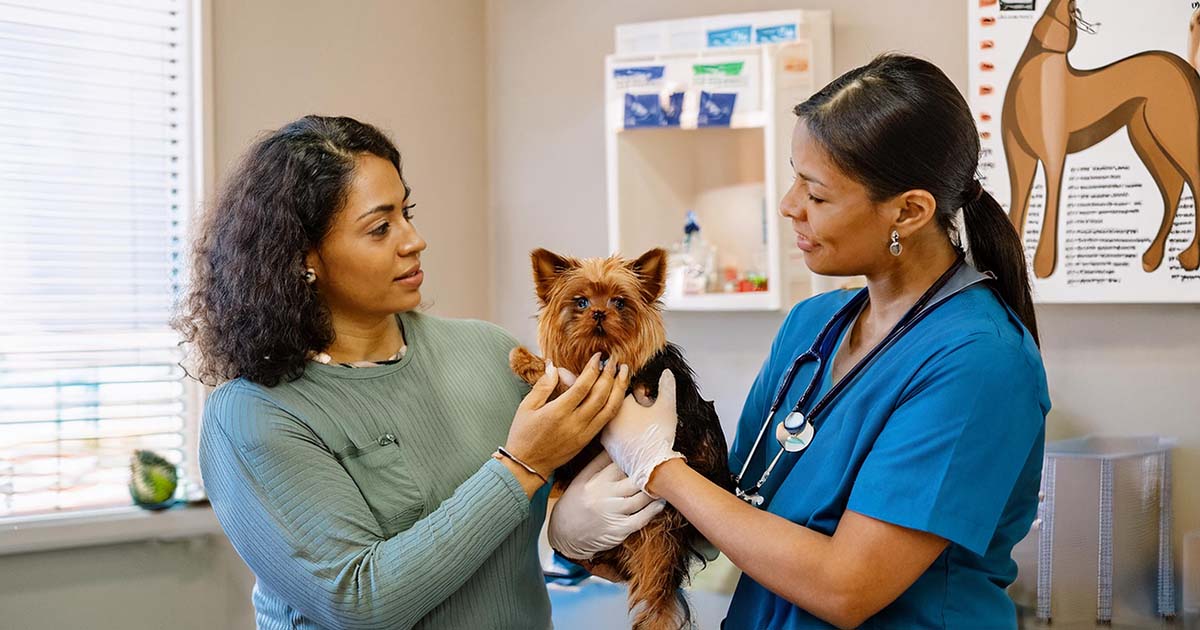Working in a veterinary practice is rewarding, but dealing with frustrated clients can make even the best days challenging. As veterinary professionals, you’re not only managing pet care but also navigating the emotions of people who care deeply about their pets, often under stressful circumstances. When clients become unhappy or upset, it can disrupt the flow of your day and affect team morale.
The good news? There are steps you can take to prevent these situations and strategies to handle them effectively when they do arise.
Why Clients Become Unhappy
Before diving into solutions, it’s helpful to understand why clients might become upset in the first place. Unlike a visit to a favorite restaurant or a fun outing, veterinary visits are usually triggered by worry, concern, or the responsibility of keeping their pets healthy. Clients may be anxious, and small things—like wait times or unexpected costs—can add fuel to their stress.
Here are a few common triggers for client dissatisfaction:
They didn’t want to be there in the first place: Most clients come to the clinic out of necessity, not choice. Veterinary visits may feel like an interruption to their day, especially when unexpected.
Rising stress levels: A long wait time, unclear procedures, or perceived lack of communication can quickly add to client stress.
Miscommunication or lack of information: Sometimes clients don’t fully understand the scope of care or cost involved, which can lead to misunderstandings. Even if information was provided, it may not have been fully absorbed amid their worry.
These factors can combine to create tension, but by being proactive, you can help mitigate many of these situations.
Reducing Client Frustration Before It Begins

Preventing client dissatisfaction in your veterinary practice is always better than managing it after the fact. While it may not eliminate all conflict, focusing on prevention can reduce the frequency and intensity of these interactions. Consider these key prevention strategies:
1. Optimize Your Veterinary Practice’s Efficiency
Efficiency matters more than ever in today’s busy veterinary environments, where long wait times can frustrate even the most patient clients. Improving your processes can make a big difference. Take time to review your daily workflows and identify any areas that could be streamlined, whether it’s room loading, check-in processes, or patient exams.
For instance, consider holding quick huddles with your team each morning to go over the day’s schedule and flag any potential bottlenecks. When your team knows what to expect, it becomes easier to work together smoothly, creating a better experience for clients.
2. Communicate Clearly and Consistently
Clients feel more at ease when they know what to expect. Simple actions like informing them about anticipated wait times, explaining procedures, and providing updates if things change can have a significant impact.
For example, when a client checks in, take a moment to outline the steps of their visit: “We’ll start by bringing you into a room where a technician will gather some background information, then you’ll meet with the veterinarian.” This sets clear expectations and helps clients feel informed.
3. Educate Clients on Care and Costs
Sometimes dissatisfaction stems from feeling uninformed. For example, if a client doesn’t understand the purpose of a test, they may balk at the cost. Taking the time to explain procedures and their value—why a test is recommended, what it will reveal, and how it impacts the pet’s care—can go a long way in easing concerns.
Think about common questions clients ask and build those explanations into your routine communications. This proactive approach reduces misunderstandings and builds trust.
4. Plan, Prepare, and Practice
The more prepared your team is to handle potential conflicts, the better equipped they’ll be to respond with professionalism and empathy. Make conflict resolution part of your team’s regular training. Consider role-playing exercises where team members take turns as the upset client. Practicing responses in a low-stress environment helps team members feel more confident and capable when real situations arise.
Handling Upset Clients When Prevention Falls Short

Even with the best prevention measures, some conflicts are inevitable. Clients may still become upset or frustrated, and it’s essential to be ready to respond. Here’s how to handle these situations in a way that keeps both your clients and team members calm and focused.
1. Shift Your Mindset
Your mindset is crucial when dealing with upset clients. It’s easy to feel defensive, especially when a client’s words seem harsh or critical. Instead, try to approach these situations with empathy. Remind yourself that the client is likely feeling stressed or worried about their pet’s health or the unexpected costs of care. With this perspective, you’re better positioned to respond with understanding rather than defensiveness, helping to de-escalate the situation.
2. Defuse and Resolve: A Simple Process
When you’re face-to-face with an upset client, it’s essential to have a process that guides you through calming and resolving the conflict. Here’s a simplified approach:
Defuse: Start by giving the client space to express their concerns. Listen actively, maintaining eye contact and nodding to show that you’re paying attention. Use phrases like, “I hear you” or “I understand that this is frustrating,” which can help the client feel acknowledged. Then, ask open-ended questions to encourage them to explain further: “Can you tell me more about what happened?” or “Help me understand what you were expecting.” These questions help the client feel heard, often calming emotions.
Resolve: Once the client’s concerns are on the table, shift towards finding a solution. Use inclusive language that emphasizes collaboration, such as, “Let’s see how we can work through this together,” or, “Here are a few options I think might help. Let’s discuss which one might work best.” This partnership approach helps move the conversation from confrontation to problem-solving, making the client feel supported.
3. Keep Practicing and Building Capability
Training your team to handle conflicts takes practice. Make role-playing part of your team’s regular activities so that everyone feels prepared when situations arise. By practicing responses to various client frustrations, your team can become adept at resolving conflicts effectively, reducing stress for both clients and staff.
The Veterinary Leadership Program
Kicking off January 2025
Get info on this exclusive program.
Learn how to:
- 1Build an accountable team
- 2Make change happen
- 3Improve performance
- 4Hire exceptional talent
Includes live coaching.
Investment will be $897 per person
Turn Client Challenges into Opportunities for Growth
Dealing with unhappy veterinary clients is part of working in a veterinary practice, but it doesn’t have to derail your day or harm your team’s morale. By focusing on prevention and practicing conflict resolution, you can turn challenging interactions into opportunities to build trust and demonstrate empathy.
Take your client interactions to the next level with the Veterinary Leadership Program. This interactive program provides comprehensive tools and training to help you create the culture you want, build trust, and lead with confidence. Join today to empower your team, enhance client satisfaction, and create a veterinary practice where everyone thrives.
